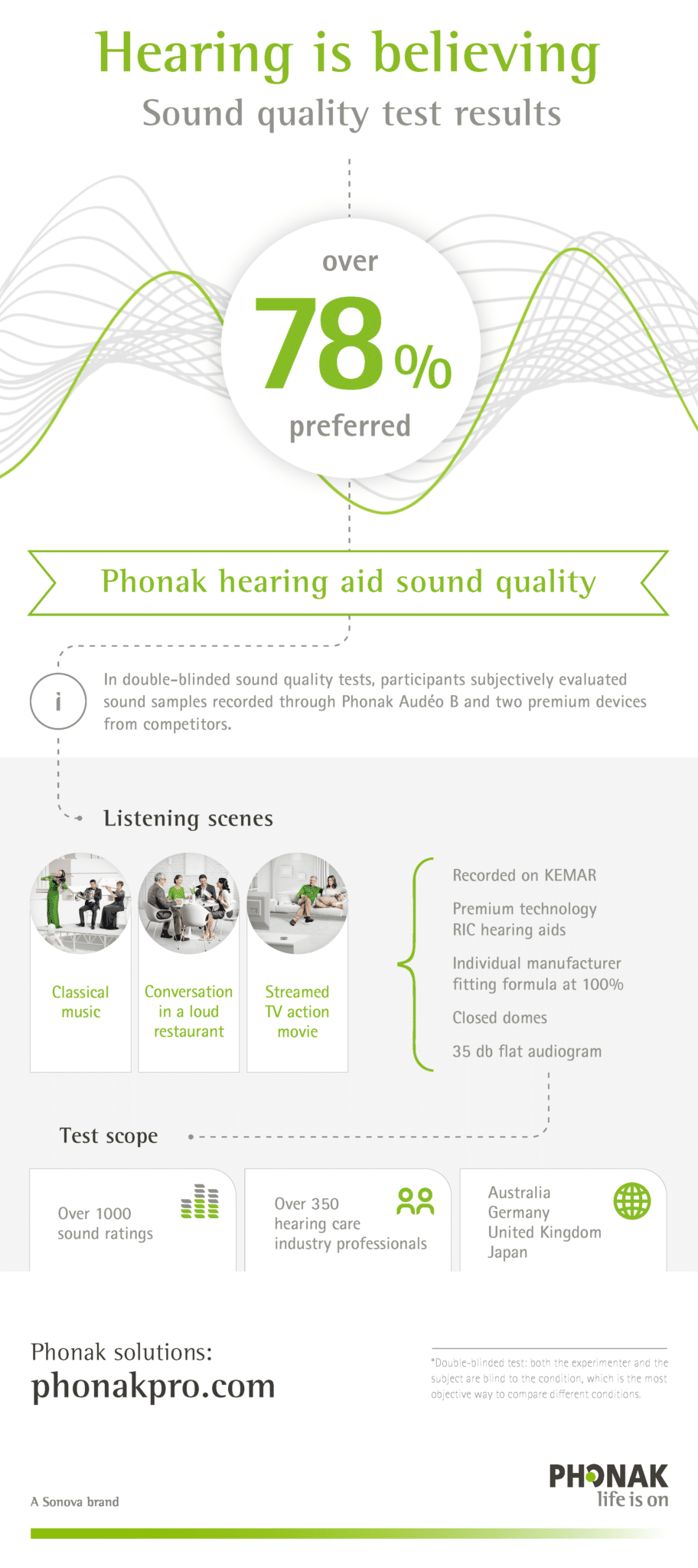
Hearing is believing – A first “ear” snapshot of performance across manufacturers
Majority of listeners agree that Phonak has the best hearing performance.
At Phonak it is important that we understand the landscape of hearing aid manufacturers in our industry ‒ Where do we stand? What do real listeners think of the sound quality provided by different hearing aid manufacturers on the market today?
To answer this question, it was necessary to find an unbiased way for listeners to compare sound quality and performance across manufacturers in the same conditions and listening environments. The truth of the matter is that it is extremely difficult for audiologists and hearing aid users to listen to multiple hearing aids in the same conditions, in a side-by-side type of comparison.
To fulfill this need and allow the opportunity for any listener to experience these side-by-side comparisons, Hearing is Believing was created. This method involves the use of a tool called MUSHRA (Multiple User Stimulus with Hidden Reference Anchor), initially used outside the field of audiology to compare sound quality, now repurposed for this use.
To prepare the Hearing is Believing listening experience, three to four of the newest, premium devices from competitors —as well as our premium device—are programmed, each according to the recommended manufacturer fitting formula for first-time users with a flat, 35dB hearing loss. (A mild hearing loss is chosen so that the recordings can be listened to, and judged, by normal hearing listeners).
Once the devices are programmed, with all gain settings and acoustic parameters programmed equivalently, they are put on the acoustic test mannequin, KEMAR, in various challenging listening situations (noisy restaurant, music, streaming of various media types). The output of the hearing aids are recorded, and after accounting for the acoustics of KEMAR’s ears and the headphones used for listening, these recordings are now available for comparison, and are loaded into the interface for testing. (See below)

For the Hearing is Believing demonstration, each sound recording is presented in a blinded, randomized fashion to the participants to judge which sound sample is considered “best”, ”middle” and “worst”.
This method is simple in theory, because the recordings are created from the hearing aids themselves. In this way the sound from each hearing aid is completely unaltered and is being heard as though each individual is wearing each pair of hearing aids on his or her own ears. The challenging part comes when we consider that each manufacturer’s hearing aids need to be programmed equivalently, including coupling, experience level, hearing loss, and program selection.
A particular strength of this demonstration, in addition to being double-blinded, is the ability to make immediate back-to-back comparisons. This is a unique experience that can be beneficial to audiologists in understanding the implications of fitting recommendations, but also hearing aid users, who may never hear multiple manufacturers in such a comparison.

What participants receive in the end is a clear impression about the device sound quality and performance offered by each manufacturer. This provides a fun, informative, and unbiased way to see which products are subjectively preferred when placed into these real-world scenarios.
Due to the value and flexibility of the Hearing is Believing experience, it is anticipated that this will be offered for years to come, as technologies change. Keep a look out for Hearing is Believing at future audiology conferences, the best way to experience the differences between hearing aid manufacturers and technologies, first-hand!
Phonak HQ recently conducted double-blinded sound quality tests to evaluate sound samples recorded through Phonak Audéo B and two premium devices from competitors. Here is a summary of their results:

